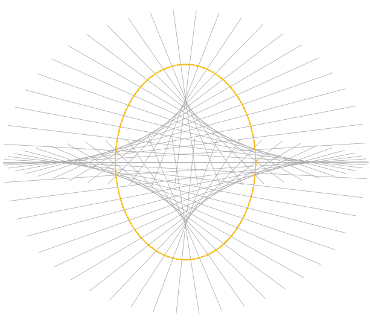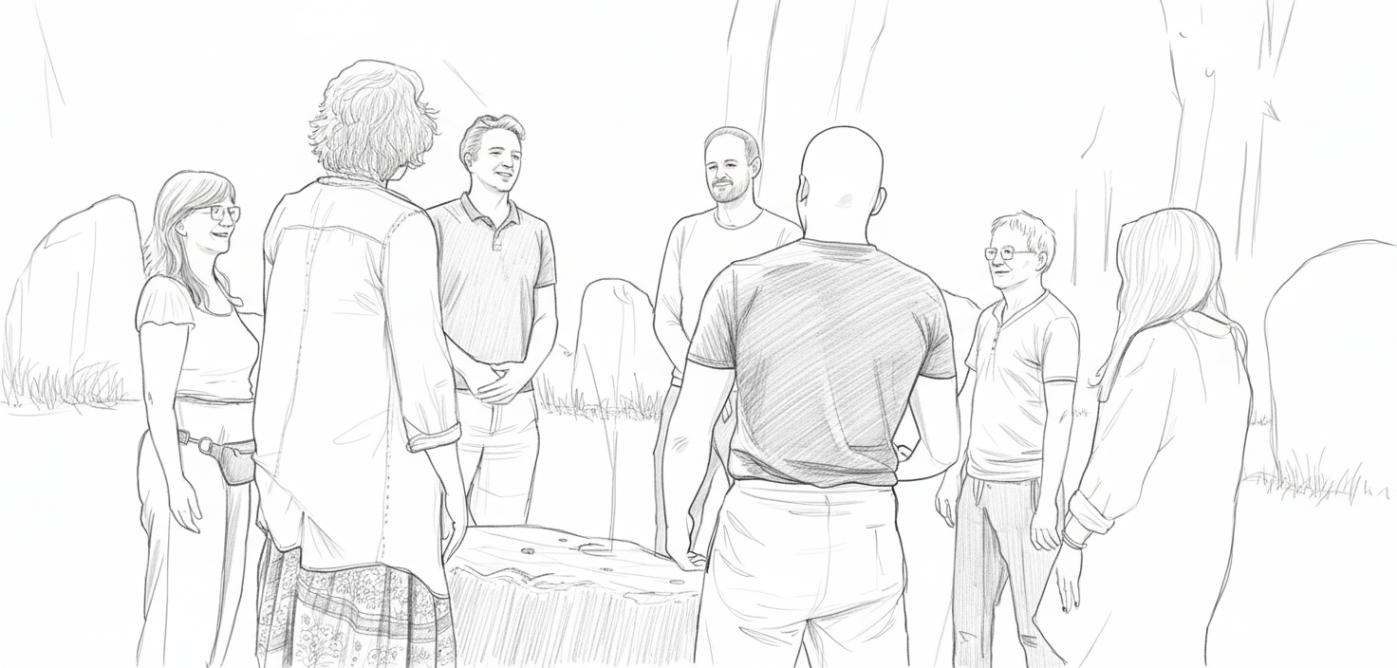Francisca Niklitschek
Contributing Authors
Dmitrij Achelrod PhD
Francisca Niklitschek
Psilocybin for Depression, Anxiety & PTSD:
Benefits & Risks
Disclaimer: The information provided in this blog is for educational and informational purposes only. It is not intended to be a substitute for professional medical advice, diagnosis, or treatment. Always consult a qualified healthcare provider before using psilocybin or any other substance for mental health treatment.
Psilocybin, the active compound in so-called “magic truffles” or “magic mushrooms,” is increasingly capturing the attention of researchers, clinicians, and seekers alike, not for escapism, but for its profound capacity to rewire the brain.
Psilocybin-assisted therapy is revealing consistent and measurable results in clinical settings, especially for those who have found little relief through conventional treatments. As new studies continue to emerge, the picture becomes clearer: this compound may not only ease the symptoms of depression, anxiety, and PTSD – it may open doors to entirely new ways of relating to one’s mind, history, and potential.
In this blog, we take a rigorous and grounded look at what the research tells us, how psilocybin interacts with the brain, and why it’s gaining momentum as a transformative tool in the evolving field of mental health.
How Psilocybin Works: Key Mechanisms Behind Its Therapeutic Effects
Let’s explore an in-depth look at how psilocybin impacts the brain to promote healing and psychological flexibility.
Psilocybin, a naturally occurring psychoactive compound found in over 200 species of fungi, is increasingly gaining scientific recognition for its therapeutic potential in treating complex mental health conditions. Unlike conventional treatments that typically manage symptoms, psilocybin appears to address the root of psychological suffering by altering fundamental brain dynamics.
1. The Science Behind Psilocybin: A Serotonin Pathway to Healing
How does psilocybin interact with serotonin receptors to influence mood and cognition?
Once the magic truffles or the magic mushrooms are ingested, psilocybin is metabolized into psilocin, which acts primarily as an agonist or partial agonist at the 5-HT2A serotonin receptor. This interaction is central to its psychoactive and therapeutic effects. Research suggests that 5-HT2A agonism leads to rapid receptor downregulation (the brain reduces the number of receptors, or makes them less sensitive), potentially mediating rapid antidepressant effects by increasing serotonin release and impacting cortical excitability. This modulation influences brain circuits responsible for mood regulation, stress reactivity, and cognitive performance [1].
2. Resetting the Default Mode Network (DMN): Breaking Rigid Thought Patterns
What is the Default Mode Network?
The default mode network (DMN) is a key brain network involved in self-referential processing, autobiographical memory, and the maintenance of the ego. It is highly active during mind-wandering and rumination, processes that are particularly prominent in depression and anxiety [2] [3] [4].
Hyperactivity in the DMN is strongly associated with:
- Rigid thought patterns
- Negative self-focus
- Over-identification with one’s narrative self
In depression, an overactive DMN often leads to persistent negative self-focused thoughts, such as “I’m worthless,” “I always mess things up,” “Nothing ever changes,” or “Everyone would be better off without me.” These thoughts reflect excessive rumination – replaying past failures, self-blame, and hopelessness – all tied to the brain’s default mode of thinking about the self and the past. In anxiety, the DMN may fuel constant worry about the future, generating thoughts like “What if something bad happens?” “What if I fail?” “I won’t be able to handle it,” or “People will judge me.” This reflects a mind caught in hypothetical scenarios, fear of social rejection, or catastrophizing. In both conditions, the DMN becomes over-engaged, trapping the person in a cycle of internal narrative that feels inescapable and overwhelming.
Psilocybin’s Impact on the Default Mode Network (DMN)
Research using functional magnetic resonance imaging (fMRI) demonstrated that psilocybin significantly reduces DMN activity, creating a temporary disruption of the neural circuits responsible for maintaining these self-reinforcing loops [5] [6] [7]. This process is like levelling a ski slope that has been carved into deep, rigid tracks after repetitive use. Just as smoothing out the snow allows new and freer paths to be taken, disrupting the DMN helps the brain escape from the deeply ingrained patterns of negative thinking.
Functional neuroimaging revealed that psilocybin leads to an acute “reset” of the DMN, disrupting maladaptive self-referential thought, followed by restoration of healthy DMN connectivity, which predicted better treatment outcomes [8].

3. Neuroplasticity and Brain Connectivity: Building New Mental Pathways
Psilocybin facilitates global increases in functional connectivity across brain regions that typically operate in isolation. This “hyper-connected” brain state allows new cognitive pathways to form, promoting psychological flexibility and openness [9] [7].
- Neuroplasticity: Studies suggest that psilocybin increases functional connectivity resulting in a more flexible brain state, potentially supporting long-term cognitive and emotional changes [10] [11].
- Connectivity and Entropy Increase: Psilocybin induces a state of heightened brain entropy, meaning the brain explores a wider range of possible mental states. This can allow individuals to break free from maladaptive thought loops [12] [13].
4. Emotional Processing and the Amygdala: Restoring Healthy Emotional Responses
The amygdala, involved in emotional processing, shows increased response to emotional faces one day post-psilocybin treatment, particularly for fearful faces, correlating with depressive symptom improvement. This suggests psilocybin may restore normal emotional responsiveness, which is often impaired in anxiety and depression, contributing to its anxiolytic effects [1][14] [15].
5. The Role of Subjective Experience: Mystical States and Therapeutic Breakthroughs
The mystical or insightful experiences induced by psilocybin, often described as ego dissolution or a sense of unity, are integral to its therapeutic potential. These experiences, when combined with non-directive and supportive psychotherapy, can facilitate emotional breakthroughs and long-term psychological changes [16][17][18].
Psilocybin’s impact on serotonin receptors, the DMN, neuroplasticity, emotional processing, and subjective experience collectively provide a comprehensive neurological foundation for its therapeutic power. These mechanisms explain why psilocybin can lead to profound emotional breakthroughs and lasting psychological transformation.

Psilocybin Therapy for Depression: Breaking the Cycles of Rumination
Depression is one of the most prevalent and disabling mental health disorders worldwide, affecting an estimated 280 million people globally [19]. Traditional treatments like selective serotonin reuptake inhibitors (SSRIs) can be life-saving, but up to 30% of patients experience treatment-resistant depression (TRD) [20].
Clinical trials at leading research centers have found that psilocybin-assisted therapy can produce rapid and sustained reductions in depressive symptoms, even in individuals who have not responded to conventional treatments [21] [8] [22] [23].
Core Pathology in Depression:
- Hyperactivity in the DMN, leading to entrenched rumination and self-focus.
- Blunted emotional responsiveness, especially to positive stimuli.
- Reduced synaptic plasticity, limiting the brain’s capacity to form new perspectives.
Psilocybin’s Specific Mechanisms for Depression:
- Disruption of DMN Hyperconnectivity: Psilocybin reduces the overactivity of the DMN, allowing for a temporary breakdown of the self-referential loops that sustain rumination and self-criticism [5] – [8]
- Enhanced Synaptogenesis and Neuroplasticity: Psilocybin promotes dendritic growth and synaptogenesis in prefrontal regions involved in mood regulation, potentially supporting long-term cognitive restructuring [10][11].
- Increased Emotional Responsiveness: fMRI studies show that psilocybin restores amygdala responsiveness to emotional stimuli, which is typically reduced in depression, leading to more balanced emotional processing [14][15]
- Promotion of Psychological Flexibility: Psychological flexibility is a key predictor of therapeutic success in depression, and psilocybin reliably enhances this by allowing individuals to explore new cognitive and emotional frameworks [12][13].
- Emotional Catharsis: Many participants report experiencing profound emotional release during the sessions, reconnecting with suppressed feelings [16] [17].
- Mystical-Type Experiences: Strong mystical experiences during psilocybin sessions are positively correlated with long-term therapeutic outcomes [18].

Rather than merely reducing symptoms, psilocybin appears to catalyze transformational shifts in perspective, often leading to greater self-acceptance and re-engagement with life.
Psilocybin Therapy for Anxiety: Reframing Fear and Expanding Inner Freedom
Anxiety disorders, including generalized anxiety, social anxiety, and existential distress in terminal illness, are among the most common mental health conditions globally.
Core Pathology in Anxiety:
- Hyperactivity in the amygdala and hypersensitivity to perceived threats.
- Maladaptive anticipatory processing: overestimation of future dangers.
- Avoidance behaviors and cognitive rigidity.
Psilocybin’s Specific Mechanisms for Anxiety:
- Amygdala Modulation: Psilocybin acutely decreases amygdala reactivity to negative stimuli, reducing exaggerated fear responses [15].
- Facilitation of Decentering and Cognitive Distance from Fear: Psilocybin enhances mindfulness-like processes, enabling patients to observe anxious thoughts without being overwhelmed [11][18].
- Disruption of Avoidance Loops via Increased Connectivity: By increasing communication between typically segregated brain regions, psilocybin allows for novel emotional and cognitive patterns to emerge, potentially breaking cycles of avoidance and catastrophizing [12][13].

Participants often describe emerging from psilocybin sessions with a broader, more spacious view of their anxieties, rather than feeling trapped by them.
Psilocybin Therapy for PTSD: Enabling Safe Memory Reconsolidation and Emotional Processing
Post-traumatic stress disorder is a deep-rooted disruption in how traumatic memories are encoded and relived, often locked into rigid neural pathways. Psilocybin offers an innovative alternative by engaging neurobiological mechanisms that underlie trauma.
Although most research is on depression and anxiety, it directly translates to PTSD’s neural mechanisms, making trauma reconceptualization possible [24].
Core Pathology in PTSD:
- Impaired fear extinction and persistent traumatic memory retrieval.
- Amygdala hyperactivity and hippocampal dysregulation.
- Rigid, defensive cognitive patterns and emotional numbing.
Psilocybin’s Specific Mechanisms for PTSD:
- Interrupting Fear-Driven Neural Circuits: Psilocybin appears to weaken fear-conditioned loops by enhancing memory reconsolidation in low-defensive states [24] [25].
- Memory Reconsolidation Under Low-Fear Conditions: Psilocybin may create a therapeutic window where traumatic memories can be revisited without overwhelming defensive responses, potentially leading to memory reconsolidation and emotional resolution [27][28].
- Amygdala Normalization and Fear Extinction: Preliminary studies suggest psilocybin normalizes amygdala response and may facilitate fear extinction processes akin to exposure therapy but in a safer, emotionally regulated state [15][14].
- Enhancement of Emotional Processing Capacity: Psilocybin’s increase in global connectivity may allow trauma survivors to access emotional content that was previously inaccessible, supporting cathartic processing and narrative re-integration [24][27].
- Cultivation of Self-Compassion and Connection: Psychedelic experiences often catalyze profound feelings of forgiveness, empathy, and belonging, which are critical for healing shame and guilt commonly associated with PTSD [14].

Although research is still in early stages, the intersection of psilocybin and trauma therapy is a highly promising frontier for future clinical exploration.
Safety of Psilocybin Psychotherapy
A recent systematic review [26] offers valuable insights into the safety of psilocybin-assisted psychotherapy (PAP), an area gaining significant attention in mental health research. After analyzing 24 clinical trials, most focused on treatment-resistant depression, the authors concluded that psilocybin appears to be generally safe when administered in controlled clinical settings. The most common side effects reported were mild and temporary, including increases in blood pressure, headaches, nausea, vomiting, and fatigue. Some participants also experienced transient anxiety during or shortly after their sessions, an expected response that typically resolved without long-term issues.
One of the most critical findings was that no deaths were linked to psilocybin across all the studies reviewed. While rare cases of suicidal thoughts or behaviors were reported, these were mostly associated with individuals who already had a prior history of suicidality. The review highlights the importance of careful screening and ongoing monitoring throughout the therapy process to ensure safety, particularly for vulnerable participants.
Overall, this review adds to the growing body of evidence suggesting that, when used responsibly and with proper clinical guidance, psilocybin-assisted psychotherapy can be a safe and potentially transformative treatment for mental health conditions.
Conclusions
While psilocybin therapy is not a panacea, its potential to disrupt entrenched neural patterns and foster psychological flexibility marks a paradigm shift in mental health treatment. Unlike conventional pharmacological interventions that often aim to suppress symptoms, psilocybin-assisted therapy appears to address the deeper cognitive and emotional roots of depression, anxiety, and possibly trauma.

Clinical trials have repeatedly demonstrated rapid and sustained improvements in treatment-resistant depression and anxiety disorders. Moreover, the profound shifts in self-perception, emotional openness, and decentering from rigid thought loops offer a fundamentally different approach to healing. Preliminary findings also suggest that psilocybin could open new avenues for treating post-traumatic stress disorder by promoting memory reconsolidation and increasing psychological flexibility.
Crucially, psilocybin is not a standalone cure. Its therapeutic potential is intrinsically tied to the context in which it is administered: preparation, skilled guidance, and integration are essential components for ensuring safety and maximizing benefits.
It is also important to recognize that psilocybin-assisted clinical therapy and psilocybin retreats settings serve different needs. Clinical therapy is designed for those navigating acute mental health struggles and is typically conducted in controlled medical environments with trained psychotherapists. Psychedelic retreats, on the other hand, offer supportive spaces for self-exploration, personal development, and emotional expansion, but they are not a substitute for medical care. If you are considering a retreat setting, we recommend reading our dedicated blog on the differences between psilocybin therapy and retreats to better understand what may best support your unique journey.
For those curious about exploring altered states of consciousness in a safe, carefully held environment that supports deep personal and professional growth, you are warmly invited to discover EvoSHIFT, our experiential leadership program offered by Evolute Institute. Our psychedelic retreat Netherlands is thoughtfully designed to integrate psilocybin experiences within a holistic process that encourages self-inquiry, enhances emotional intelligence, and fosters purpose-driven leadership.
In sum, psilocybin therapy and psilocybin-assisted programs like EvoSHIFT represent not just new tools, but a new way of understanding mental health and human growth: one that invites us to explore altered states of consciousness, confront deeply held narratives, and ultimately, reimagine what it means to heal and flourish.
Bibliography
[1] M. I. Husain et al., ‘Serotonergic psychedelics for depression: What do we know about neurobiological mechanisms of action?’, Front. Psychiatry, vol. 13, Feb. 2023, doi: 10.3389/fpsyt.2022.1076459.
[2] C. G. Davey, J. Pujol, and B. J. Harrison, ‘Mapping the self in the brain’s default mode network’, NeuroImage, vol. 132, pp. 390–397, May 2016, doi: 10.1016/j.neuroimage.2016.02.022.
[3] ‘default-mode, ego-functions and free-energy: a neurobiological account of Freudian ideas | Brain | Oxford Academic’. Accessed: Jun. 18, 2025. [Online]. Available: https://academic.oup.com/brain/article/133/4/1265/307446
[4] V. Menon, ‘20 years of the default mode network: A review and synthesis’, Neuron, vol. 111, no. 16, pp. 2469–2487, Aug. 2023, doi: 10.1016/j.neuron.2023.04.023.
[5] R. L. Carhart-Harris et al., ‘Neural correlates of the psychedelic state as determined by fMRI studies with psilocybin’, Proc. Natl. Acad. Sci., vol. 109, no. 6, pp. 2138–2143, Feb. 2012, doi: 10.1073/pnas.1119598109.
[6] E. Tagliazucchi, R. Carhart-Harris, R. Leech, D. Nutt, and D. R. Chialvo, ‘Enhanced repertoire of brain dynamical states during the psychedelic experience’, Hum. Brain Mapp., vol. 35, no. 11, pp. 5442–5456, Nov. 2014, doi: 10.1002/hbm.22562.
[7] J. S. Siegel et al., ‘Psilocybin desynchronizes brain networks’, medRxiv, p. 2023.08.22.23294131, Aug. 2023, doi: 10.1101/2023.08.22.23294131.
[8] R. L. Carhart-Harris et al., ‘Psilocybin for treatment-resistant depression: fMRI-measured brain mechanisms’, Sci. Rep., vol. 7, no. 1, p. 13187, Oct. 2017, doi: 10.1038/s41598-017-13282-7.
[9] M. Schmidt et al., ‘Psilocin fosters neuroplasticity in iPSC-derived human cortical neurons’, eLife, vol. 14, Mar. 2025, doi: 10.7554/eLife.104006.1.
[10] A. Melani, M. Bonaso, L. Biso, B. Zucchini, C. Conversano, and M. Scarselli, ‘Uncovering Psychedelics: From Neural Circuits to Therapeutic Applications’, Pharm. Basel Switz., vol. 18, no. 1, p. 130, Jan. 2025, doi: 10.3390/ph18010130.
[11] F. Gudmundsen et al., ‘A single dose of psilocybin induces lasting changes in metabolic connectivity within biologically informed rat brain networks related to compulsions and anxiety.’, May 2024, doi: 10.31219/osf.io/mq4v2.
[12] J. S. Siegel et al., ‘Psilocybin desynchronizes brain networks’, medRxiv, p. 2023.08.22.23294131, Aug. 2023, doi: 10.1101/2023.08.22.23294131.
[13] R. L. Carhart-Harris et al., ‘The entropic brain: a theory of conscious states informed by neuroimaging research with psychedelic drugs’, Front. Hum. Neurosci., vol. 8, p. 20, 2014, doi: 10.3389/fnhum.2014.00020.
[14] T. G. Zaretsky et al., ‘The Psychedelic Future of Post-Traumatic Stress Disorder Treatment’, Curr. Neuropharmacol., vol. 22, no. 4, pp. 636–735, 2024, doi: 10.2174/1570159X22666231027111147.
[15] R. Kraehenmann et al., ‘Psilocybin-Induced Decrease in Amygdala Reactivity Correlates with Enhanced Positive Mood in Healthy Volunteers’, Biol. Psychiatry, vol. 78, no. 8, pp. 572–581, Oct. 2015, doi: 10.1016/j.biopsych.2014.04.010.
[16] ‘Unique Psychological Mechanisms Underlying Psilocybin Therapy Versus Escitalopram Treatment in the Treatment of Major Depressive Disorder | International Journal of Mental Health and Addiction’. Accessed: Jun. 19, 2025. [Online]. Available: https://link.springer.com/article/10.1007/s11469-024-01253-9
[17] J. Liebnau, F. Betzler, and A. Kerber, ‘Catalyst for change: Psilocybin’s antidepressant mechanisms—A systematic review’, J. Psychopharmacol. (Oxf.), vol. 39, pp. 397–415, 2025, doi: 10.1177/02698811241312866.
[18] ‘Psilocybin produces substantial and sustained decreases in depression and anxiety in patients with life-threatening cancer: A randomized double-blind trial – Roland R Griffiths, Matthew W Johnson, Michael A Carducci, Annie Umbricht, William A Richards, Brian D Richards, Mary P Cosimano, Margaret A Klinedinst, 2016’. Accessed: Jun. 18, 2025. [Online]. Available: https://journals.sagepub.com/doi/10.1177/0269881116675513
[19] ‘Depressive disorder (depression)’. Accessed: Jun. 18, 2025. [Online]. Available: https://www.who.int/news-room/fact-sheets/detail/depression
[20] K. S. Al-Harbi, ‘Treatment-resistant depression: therapeutic trends, challenges, and future directions’, Patient Prefer. Adherence, vol. 6, pp. 369–388, May 2012, doi: 10.2147/PPA.S29716.
[21] R. L. Carhart-Harris et al., ‘Psilocybin with psychological support for treatment-resistant depression: an open-label feasibility study’, Lancet Psychiatry, vol. 3, no. 7, pp. 619–627, Jul. 2016, doi: 10.1016/S2215-0366(16)30065-7.
[22] ‘Efficacy and safety of psilocybin-assisted treatment for major depressive disorder: Prospective 12-month follow-up – Natalie Gukasyan, Alan K Davis, Frederick S Barrett, Mary P Cosimano, Nathan D Sepeda, Matthew W Johnson, Roland R Griffiths, 2022’. Accessed: Jun. 18, 2025. [Online]. Available: https://journals.sagepub.com/doi/10.1177/02698811211073759
[23] J. Sloshower et al., ‘Psilocybin-assisted therapy of major depressive disorder using Acceptance and Commitment Therapy as a therapeutic frame’, J. Context. Behav. Sci., vol. 15, pp. 12–19, Jan. 2020, doi: 10.1016/j.jcbs.2019.11.002.
[24] C. Choi, D. E. Johnson, D. Chen-Li, and J. Rosenblat, ‘Mechanisms of psilocybin on the treatment of posttraumatic stress disorder’, J. Psychopharmacol. Oxf. Engl., p. 2698811241286771, Oct. 2024, doi: 10.1177/02698811241286771.
[25] A. J. Khan, E. Bradley, A. O’Donovan, and J. Woolley, ‘Psilocybin for Trauma-Related Disorders’, Curr. Top. Behav. Neurosci., vol. 56, pp. 319–332, 2022, doi: 10.1007/7854_2022_366.
[26] R. R. Freitas, E. S. Gotsis, A. T. Gallo, B. M. Fitzgibbon, N. W. Bailey, and P. B. Fitzgerald, ‘The safety of psilocybin-assisted psychotherapy: A systematic review’, Aust. N. Z. J. Psychiatry, vol. 59, no. 2, pp. 128–151, Feb. 2025, doi: 10.1177/00048674241289024.
[27] J. R. Rose, ‘Memory, trauma, and self: Remembering and recovering from sexual abuse in psychedelic-assisted therapy’, Oct. 2024, doi: 10.1556/2054.2024.00363.
[28] C. E. Miller and P. R. Zoladz, ‘Evaluating the potential for psilocybin as a treatment for post-traumatic stress disorder’, J. Pharmacol. Exp. Ther., vol. 392, no. 1, p. 100026, Jan. 2025, doi: 10.1124/jpet.124.002237.
FREQUENTLY ASKED QUESTIONS (FAQ)
Psilocybin therapy is a form of psychedelic-assisted psychotherapy that uses psilocybin to facilitate deep psychological exploration, emotional release, and mental health improvements. It is always combined with therapeutic preparation, support during the session, and post-session integration.
Psilocybin temporarily decreases activity in the default mode network, which is associated with self-focused rumination and rigid thought patterns. It simultaneously increases neural connectivity and brain plasticity, allowing new perspectives and emotional breakthroughs.
Psilocybin reduces activity in the default mode network (DMN), interrupting self-reinforcing cycles of rumination and negative self-talk. It also promotes neuroplasticity, allowing the brain to adopt new emotional and cognitive patterns linked to improved mood.
Yes. Psilocybin therapy has shown remarkable results in clinical trials for people with treatment-resistant depression, offering rapid and sustained symptom relief in cases where conventional treatments have failed.
Psilocybin decreases overactivity in the amygdala—the brain’s fear center—and downregulates the DMN, disrupting cycles of worry and anticipatory fear. This promotes cognitive flexibility and emotional resilience.
Psilocybin shows potential for PTSD by facilitating safe memory reconsolidation and enhancing emotional processing. It helps patients revisit traumatic memories without overwhelming fear, creating opportunities for healing.
Clinical studies show that psilocybin therapy is safe when conducted in controlled, supportive environments with trained professionals. However, it may not be appropriate for people with a history of psychosis or certain cardiovascular conditions.
The positive effects of psilocybin therapy can last several months or even longer when combined with integration practices. Many participants report enduring changes in mood, perspective, and emotional resilience after just one or two sessions.
Psilocybin is known for inducing deep mystical-type experiences, ego dissolution, and emotional catharsis. MDMA primarily reduces fear and promotes emotional connection, particularly useful for PTSD. LSD is similar to psilocybin in some effects but tends to last longer and may have different sensory profiles.

Patrick Liebl,
Lead Facilitator & Integration Expert
Curious to learn more?
We invite you to schedule a call with us. Together, we can explore any questions you may have. We can explore whether a program with a legal psychedelic experience is right for you at this time.
“We are here to support your exploration, at your pace, with no expectations.” – Patrick Liebl



